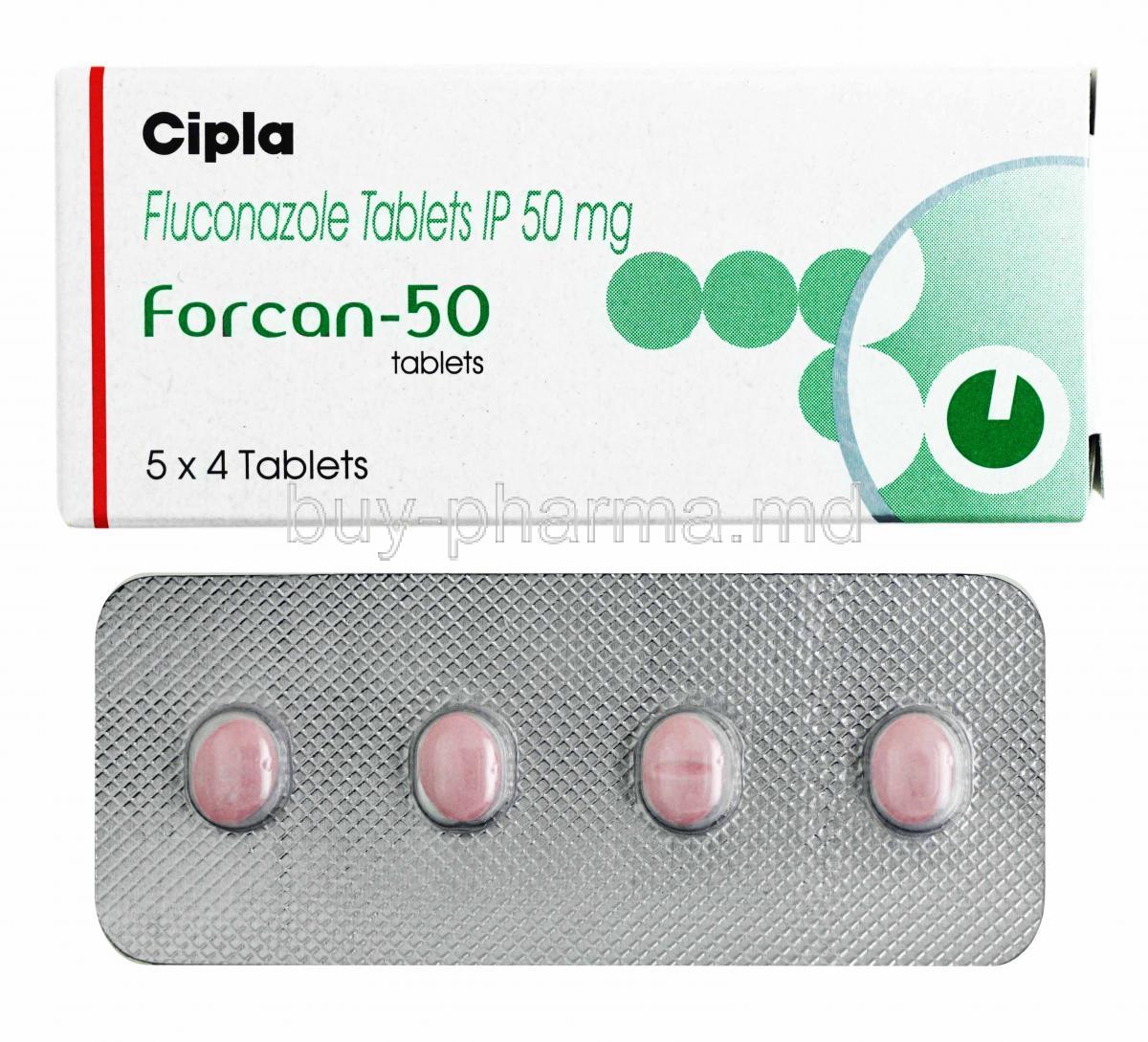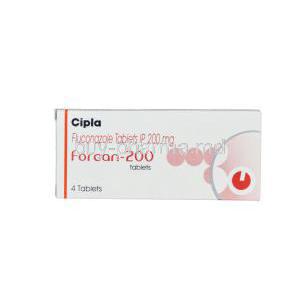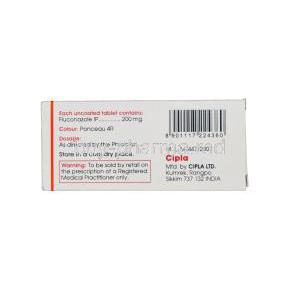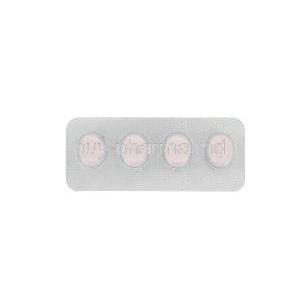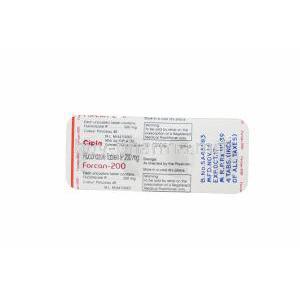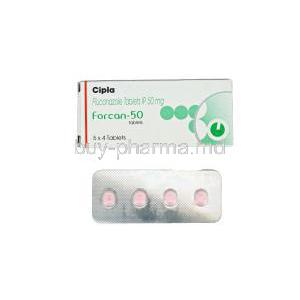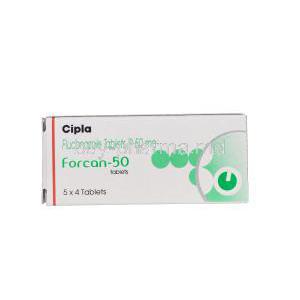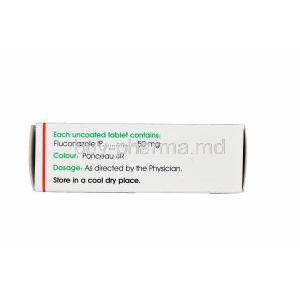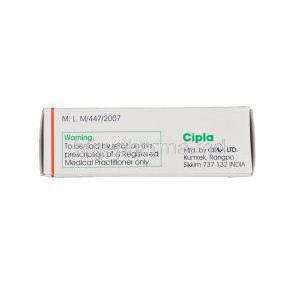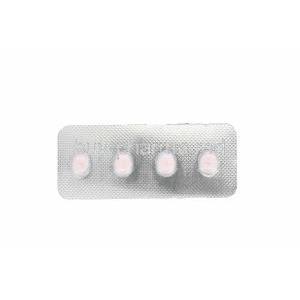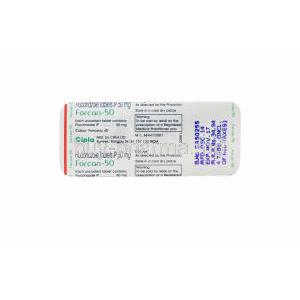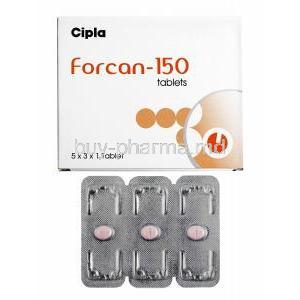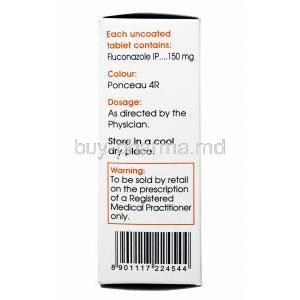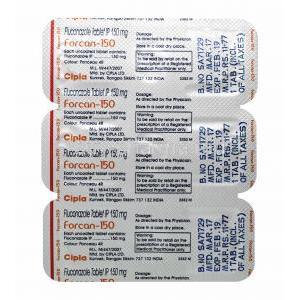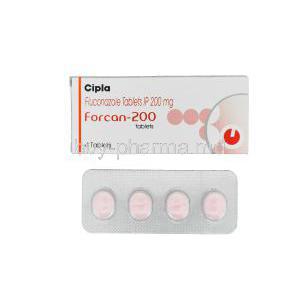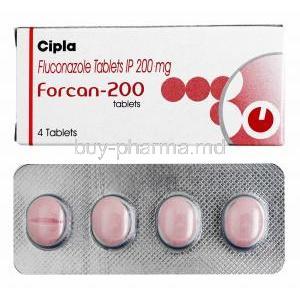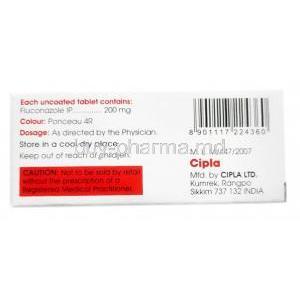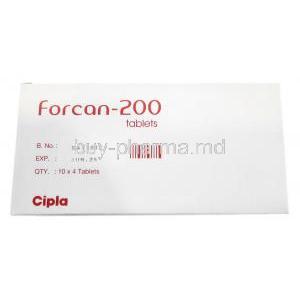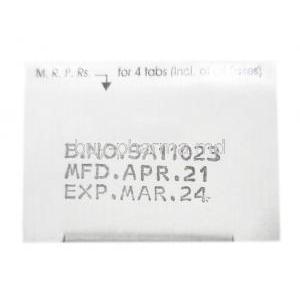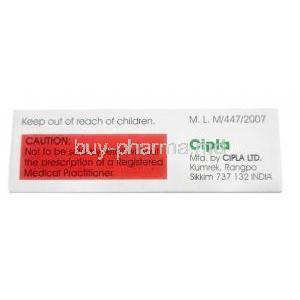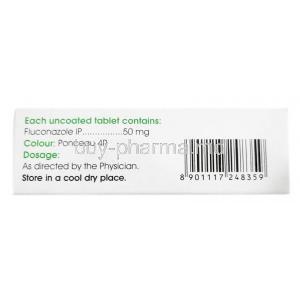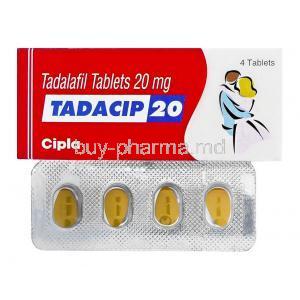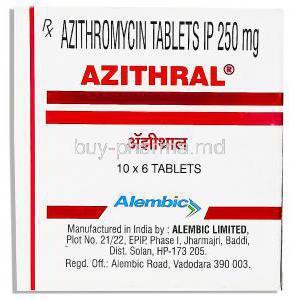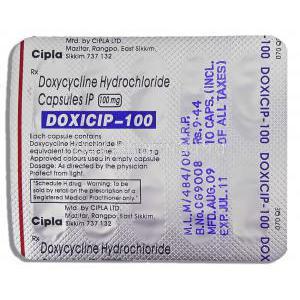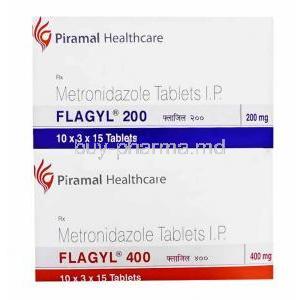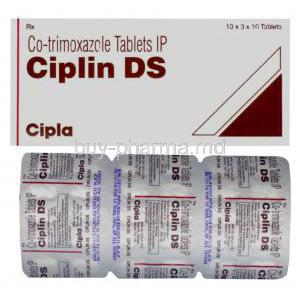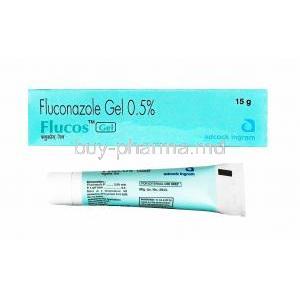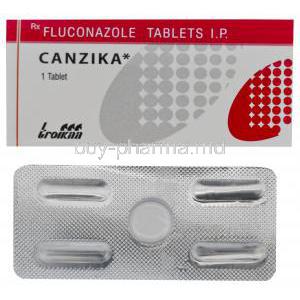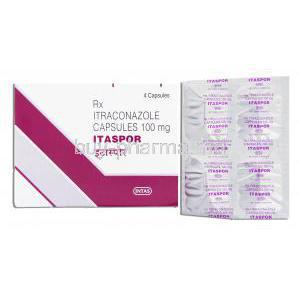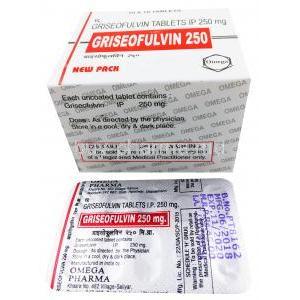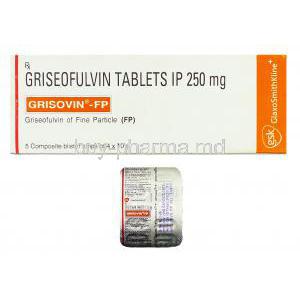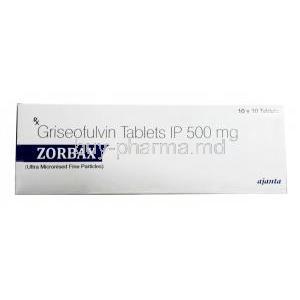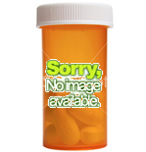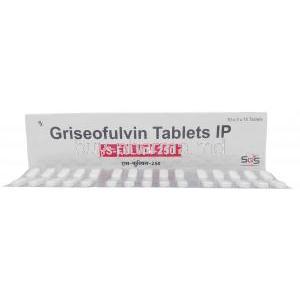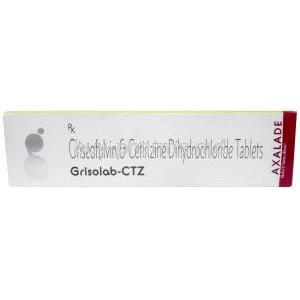Introduction to Forcan (Fluconazole)
Overview of Forcan as an Antifungal Medication
Forcan contains fluconazole, a systemically active triazole antifungal. It targets a broad array of Candida species and selected non-Candida yeasts, delivering reliable clinical responses across mucosal and invasive infections. Rapid oral absorption, high bioavailability, and extensive tissue penetration underpin its therapeutic utility.
- Broad-spectrum coverage within the yeast domain
- Predictable pharmacokinetics with oral dosing
- Favorable tolerability compared with older azoles
Therapeutic Classification and Pharmacological Profile
Pharmacotherapeutic class: triazole antifungal agent. Mechanistic hallmark: inhibition of fungal sterol biosynthesis. Long elimination half-life enables once-daily administration in most indications, supporting adherence and steady exposure.
- Class: Antimycotics for systemic use (triazoles)
- PK features: high oral bioavailability (~90%), low protein binding
- PD target: fungal lanosterol 14α-demethylase
History and Approval Status of Fluconazole
Fluconazole emerged during the late 1980s as a modern azole with superior aqueous solubility and central nervous system penetrance. It rapidly became a standard for cryptococcal meningitis and mucosal candidiasis. Subsequent updates to labeling refined dosing in special populations and drug–drug interaction guidance.
Composition and Formulation
Active Ingredient: Fluconazole
Each Forcan tablet contains fluconazole as the active moiety, a bis-triazole compound with selective affinity for fungal cytochrome P450 enzymes.
Available Strengths and Dosage Forms (Tablets, Suspension, IV)
Formulation breadth allows step-down therapy and flexible initiation. Oral tablets are most common, complemented by oral suspension for patients with dysphagia and intravenous options for severe disease.
- Tablets: commonly 50 mg, 100 mg, 150 mg, 200 mg
- Oral suspension: variable strengths (e.g., 50 mg/5 mL)
- Intravenous solution: hospital-based management for severe infections
Inactive Ingredients and Excipients
Excipients in tablets typically include microcrystalline cellulose, maize starch, lactose or alternative diluents, and magnesium stearate. Exact composition may vary by strength and manufacturer; patients with excipient sensitivities should review the package leaflet.
Mechanism of Action: How Fluconazole Works
Role as a Triazole Antifungal
Fluconazole belongs to the triazole subclass, engineered for selective fungal enzyme inhibition with minimal impact on human sterol pathways. The result is targeted antifungal activity with a favorable therapeutic index.
Inhibition of Fungal Cytochrome P450 Enzyme (Lanosterol 14α-Demethylase)
The drug binds and inhibits fungal CYP51 (lanosterol 14α-demethylase), a pivotal enzyme in the ergosterol biosynthetic cascade. This blockade arrests demethylation steps critical for sterol maturation.
Effect on Ergosterol Synthesis and Fungal Cell Membrane Disruption
Ergosterol depletion and toxic sterol accumulation destabilize fungal membranes. Permeability increases. Growth is curtailed; fungistatic effects predominate against most Candida species, while fungicidal activity may occur in select contexts.
Medical Uses of Forcan
Approved Indications
Vaginal Candidiasis
Single-dose therapy is frequently sufficient for uncomplicated vulvovaginal candidiasis. Recurrent disease may necessitate induction and maintenance regimens.
Oropharyngeal and Esophageal Candidiasis
Daily dosing for 1–2 weeks (or longer for esophageal involvement) typically achieves clinical and mycological cure. Immunocompromised patients may require extended courses.
Systemic Candidiasis (Candidemia, Disseminated Candidiasis)
Used as first-line or step-down therapy depending on species susceptibility and clinical stability. Therapeutic drug exposure in serum and tissues facilitates eradication.
Cryptococcal Meningitis
Backbone of consolidation and maintenance therapy following induction with amphotericin-based regimens. Excellent cerebrospinal fluid penetration supports durable control.
Prophylaxis of Fungal Infections in Immunocompromised Patients
Reduces incidence of mucosal and invasive candidiasis in patients undergoing chemotherapy, radiotherapy, or advanced HIV infection when risk is elevated.
Dermatological Uses
Tinea Infections (Ringworm, Athlete’s Foot, Jock Itch)
Oral therapy is considered for extensive, refractory, or hair-bearing area involvement where topical agents underperform.
Onychomycosis (Fungal Nail Infection)
Intermittent or continuous systemic therapy may be employed when dermatophyte or yeast involvement is confirmed and topical options are inadequate.
Off-Label Uses of Fluconazole
Prevention of Recurrent Yeast Infections
Maintenance dosing schedules can mitigate relapse in recurrent vulvovaginal candidiasis after appropriate induction therapy.
Adjunct Therapy in Coccidioidomycosis
Oral azole therapy may serve as an alternative or adjunct in non-meningeal disease when susceptibility and clinical context are favorable.
Alternative Treatment in Histoplasmosis and Blastomycosis
Considered when first-line azoles are contraindicated or poorly tolerated; efficacy is variable and species-dependent.
Use in Prophylaxis for Bone Marrow or Organ Transplant Patients
Selected centers employ fluconazole to prevent candidal colonization and infection during periods of profound immunosuppression.
Dosage and Administration
Standard Dosing Schedules for Approved Conditions
Dosing is indication-specific, reflecting pathogen burden and site of infection.
- Vulvovaginal candidiasis: often 150 mg as a single dose
- Oropharyngeal candidiasis: 100–200 mg once daily for 7–14 days
- Esophageal candidiasis: 200–400 mg once daily for 14–21 days or longer
- Candidemia/disseminated candidiasis: 400 mg loading, then 200–400 mg daily
- Cryptococcal meningitis (consolidation/maintenance): 400–800 mg daily then 200 mg daily for prolonged periods as clinically indicated
Single-Dose Versus Multi-Day Therapy
Uncomplicated mucosal disease may respond to single-dose therapy; invasive and esophageal infections require extended courses. Clinical response should be corroborated by symptom resolution and, when appropriate, culture or antigen clearance.
Dosage Adjustments for Severe Infections
Higher daily doses or loading strategies are used in severe, deep-seated, or central nervous system infections. Step-down to oral therapy is common once stability is achieved and susceptibilities are known.
Administration With or Without Food
Food does not materially affect absorption. Tablets may be taken without regard to meals, simplifying daily routines and improving adherence.
Importance of Adherence to Full Treatment Course
Premature discontinuation risks relapse and resistance selection. Completing the prescribed course ensures sustained mycological control and symptom abatement.
Administration in Special Populations
Elderly Patients: Considerations in Renal Clearance and Dose Adjustment
Because fluconazole is predominantly renally eliminated, dose reductions are advised when creatinine clearance is reduced.
- Assess renal function (e.g., eGFR) prior to initiation and periodically
- Reduce maintenance dose when CrCl ≤ 50 mL/min, after any loading dose
- Monitor for cumulative adverse effects (e.g., gastrointestinal, hepatic, QT)
Pregnant Women: Risk Categories, Teratogenicity Concerns, Case Studies
High-dose, prolonged systemic exposure during the first trimester has been associated with rare congenital anomalies in epidemiologic and case-report literature. Short single-dose therapy for uncomplicated candidiasis carries a different risk-benefit profile and should be evaluated individually.
- Avoid prolonged high-dose regimens during pregnancy unless benefits outweigh risks
- Consider topical alternatives for uncomplicated vulvovaginal candidiasis when feasible
- Engage in shared decision-making with obstetric oversight
Nursing Mothers: Transfer Into Breast Milk and Clinical Guidance
Fluconazole is excreted into breast milk at concentrations approaching plasma. Short courses are generally considered compatible with breastfeeding, but infants should be observed for gastrointestinal upset or thrush flora shifts.
- Weigh maternal benefits against potential infant exposure
- Monitor infants for diarrhea, irritability, or unusual rash
- Time dosing after a feed to potentially reduce peak exposure
Children and Infants: Pediatric Dosing Guidelines and Safety Profile
Pediatric dosing is weight-based and indication-specific, with careful attention to maturation of renal function in neonates. Safety data support use in mucosal and invasive candidiasis when dosed appropriately.
- Typical dosing: 3–12 mg/kg/day depending on indication and severity
- Neonates may require extended dosing intervals due to prolonged half-life
- Ongoing monitoring: liver enzymes, renal function, clinical response
Side Effects of Forcan
Common Side Effects
Forcan (fluconazole) is generally well tolerated, yet some individuals may experience mild reactions. These are usually self-limiting but can cause discomfort during therapy.
- Nausea, vomiting, abdominal pain – gastrointestinal disturbances are the most frequently reported adverse effects.
- Headache and dizziness – neurological symptoms that may affect daily activities such as driving or operating machinery.
- Rash or mild skin irritation – dermatological manifestations that typically resolve after discontinuation.
Less Common but Serious Side Effects
Although rare, severe adverse reactions require immediate medical evaluation. Awareness of these conditions is critical for safe administration.
- Hepatotoxicity and liver enzyme elevations – potential risk of hepatic injury, ranging from asymptomatic enzyme elevations to fulminant hepatitis.
- Severe skin reactions – including Stevens-Johnson syndrome and toxic epidermal necrolysis, which can be life-threatening.
- QT prolongation and cardiac arrhythmias – abnormal heart rhythm that may predispose to torsades de pointes.
- Seizures and hematological effects – rare neurological and blood-related complications.
Drug Interactions
Fluconazole interacts with multiple pharmacological classes due to its inhibition of cytochrome P450 enzymes. Vigilance is required when co-prescribing.
- CYP3A4 substrates and inhibitors – interactions can lead to toxic accumulation or therapeutic failure of concurrent drugs.
- Anticoagulants, antidiabetics, and statins – risk of increased bleeding, hypoglycemia, or rhabdomyolysis respectively.
- Oral contraceptives and hormone therapies – may alter hormone metabolism but usually without clinically significant contraceptive failure.
- Alcohol and food – no major interactions, though alcohol may exacerbate hepatic strain.
Warnings and Important Precautions
Certain precautions should be highlighted to reduce risk and ensure responsible use.
- Risk of hepatotoxicity in long-term use – periodic monitoring of liver enzymes is advised.
- Cardiac precautions – individuals with baseline QT prolongation require ECG monitoring.
- Immunocompromised individuals – heightened risk of resistance and opportunistic infections.
- Resistance development – inappropriate or incomplete therapy fosters resistant fungal strains.
Contraindications
Forcan must not be used in patients with the following conditions:
- Hypersensitivity – documented allergy to fluconazole or other azole antifungals.
- Concurrent QT-prolonging drugs – combinations that significantly elevate arrhythmia risk are contraindicated.
Careful Administration
Careful dosing and clinical oversight are needed for at-risk populations.
- Pre-existing liver disease – dosage modification and liver function monitoring required.
- Renal impairment – dose reduction necessary as drug clearance is primarily renal.
- Polypharmacy – increased vigilance for pharmacokinetic and pharmacodynamic interactions.
Overdosage and Emergency Management
Accidental or intentional overdose of fluconazole necessitates urgent intervention.
- Signs and symptoms – hallucinations, paranoia, gastrointestinal upset, seizures.
- Immediate interventions – gastric lavage and supportive care.
- Hemodialysis – effectively enhances elimination due to the drug’s low protein binding.
Handling and Storage Precautions
Proper handling ensures drug stability and safety for patients and caregivers.
- Storage conditions – store at controlled room temperature, protected from excessive moisture and light.
- Shelf life and stability – adhere to manufacturer’s expiry date; discard unused or damaged tablets appropriately.
- Safe handling – caregivers should avoid crushing tablets unless directed, and wash hands after contact to prevent inadvertent exposure.
Forcan, Fluconazole Tablet FAQ
- What is forcan used for?
- Are forcan and fluconazole the same?
- Is forcan 200 a steroid?
- Can I buy Forcan 150 over the counter?
- What are the side effects of Forcan-200?
- Is forcan an antibiotic?
- What are the precautions while taking Forcan 200?
- How does forcan work?
- What is tablet fluconazole used for?
- Is one fluconazole pill enough?
- How many days should you take fluconazole tablets?
- Can fluconazole cause a rash?
- How quickly does fluconazole start working?
- What food to avoid when taking fluconazole?
- Is fluconazole an antibiotic?
- Does fluconazole stop itching?
- What are the common side effects of fluconazole?
- Can fluconazole cause weight gain?
- How long does fluconazole pill stay in your body?
- Who cannot take fluconazole?
- Is one tablet of fluconazole enough?
- Can fluconazole make you tired?
- Does fluconazole cause hair loss?
- Which disease is cured by fluconazole?
- Is fluconazole bad for your liver?
- What not to mix with fluconazole?
- How long does fluconazole stay in your system?
- How fast does fluconazole work?
What is forcan used for?
Forcan 150 mg Tablet is an antifungal medication used to address a wide variety of infections caused by fungi and yeast.
Are forcan and fluconazole the same?
Yes
Is forcan 200 a steroid?
No
Can I buy Forcan 150 over the counter?
No
What are the side effects of Forcan-200?
- headaches
- diarrhea
- nausea
- upset stomach
- dizziness
- abdominal pain
- changed food preferences
Is forcan an antibiotic?
Forcan Tablet is an antifungal medication used to address a range of fungal infections
What are the precautions while taking Forcan 200?
- Arrhythmia
- Extended QT interval on ECG
- Compromised liver/kidney function
How does forcan work?
It functions by inhibiting the growth of fungi and is utilized to address infections in the mouth, throat, vagina, and various other body areas, including fingernails and toenails. It eliminates fungi by breaking down the fungal cell membrane.
What is tablet fluconazole used for?
Fluconazole is utilized to address severe fungal or yeast infections, such as vaginal candidiasis, oropharyngeal candidiasis (thrush, oral thrush), esophageal candidiasis (candida esophagitis), and various other candida infections.
Is one fluconazole pill enough?
For mild, uncomplicated infections, fluconazole is recommended as a single dose of 150 mg.
How many days should you take fluconazole tablets?
- Oral (mouth) thrush – 50mg daily, for a duration of 7 to 14 days.
- Vaginal thrush or balanitis – 150mg, taken in a single dose.
- Recurrent vaginal thrush – 150mg, administered once every 72 hours for the initial 3 doses, followed by 150mg weekly for 6 months.
Can fluconazole cause a rash?
Experiencing a skin rash while on fluconazole may indicate a serious allergic reaction (anaphylaxis)
How quickly does fluconazole start working?
1-2 weeks
What food to avoid when taking fluconazole?
There are no particular foods to steer clear of while using fluconazole
Is fluconazole an antibiotic?
No
Does fluconazole stop itching?
Yes
What are the common side effects of fluconazole?
- Headache
- Stomach pain
- Diarrhea
- Rash
Can fluconazole cause weight gain?
No
How long does fluconazole pill stay in your body?
6 days
Who cannot take fluconazole?
- ever experienced an allergic reaction to fluconazole or any other medication
- a heart condition, including issues with heart rhythm (arrhythmia)
Is one tablet of fluconazole enough?
If you are experiencing a vaginal yeast infection, a single dose of fluconazole might be sufficient, and you could notice your symptoms beginning to improve within 24 hours.
Can fluconazole make you tired?
Yes
Does fluconazole cause hair loss?
Yes
Which disease is cured by fluconazole?
Fluconazole is often prescribed to address specific fungal infections, such as candidiasis (including vaginal yeast infections and oral thrush) or a more severe condition known as cryptococcal meningitis.
Is fluconazole bad for your liver?
Yes
What not to mix with fluconazole?
How long does fluconazole stay in your system?
5-10 days
How fast does fluconazole work?
1-2 weeks

